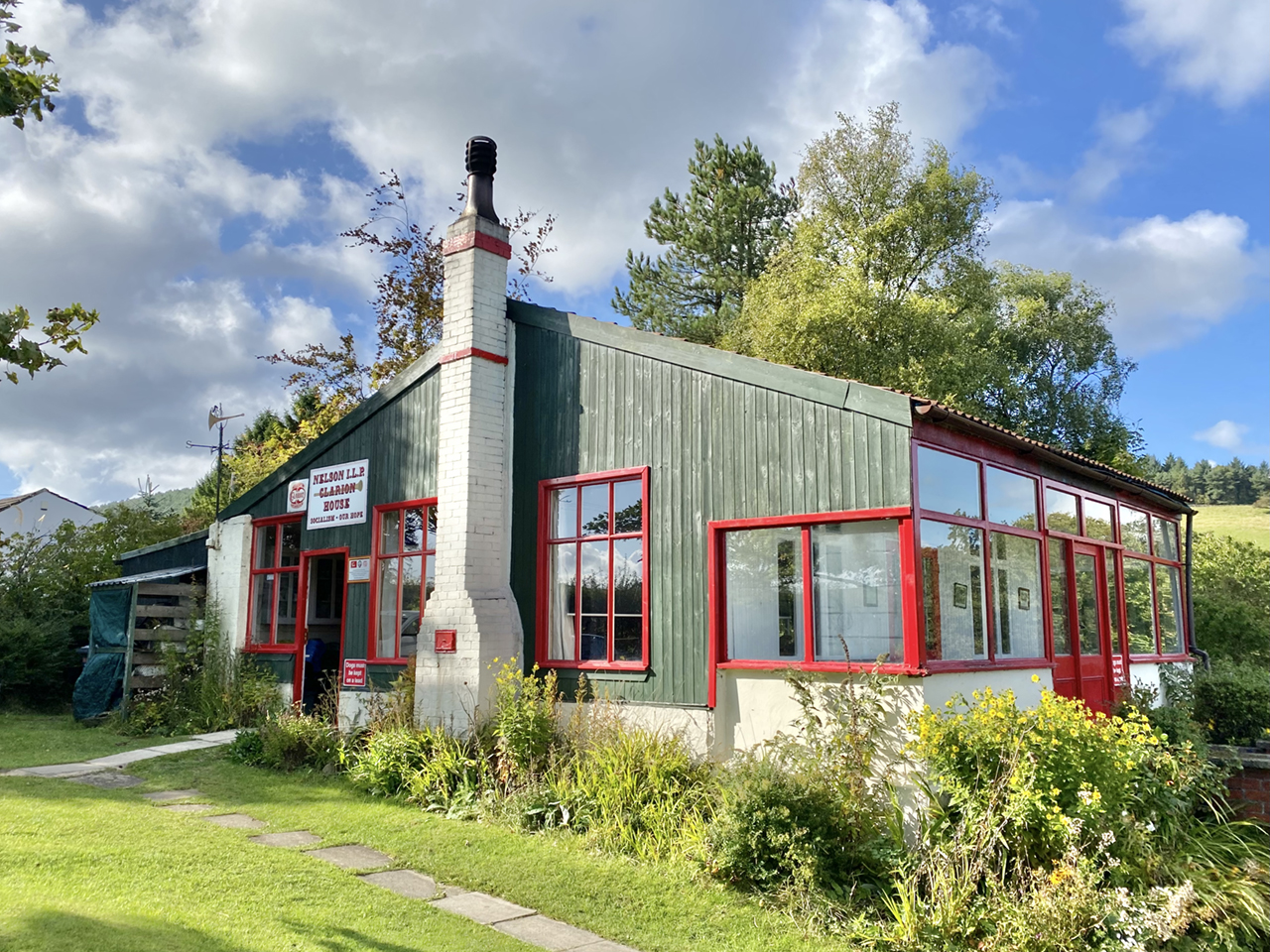Clarion’s call for walkers
Timber shack for the left leaning launches new trail
The timber shack with brick chimney nestling among trees at the foot of a sloping field doesn’t look like a citadel of radicals. Only when you see a plaque at the door does the building’s revolutionary past becomes clear.
“No Pasaran!” it declares (“They shall not pass!” in English). That was the rallying call used by volunteers fighting Franco’s troops in the 1936-39 Spanish Civil War. Some of those volunteers who answered the call to arms against fascism were once familiar faces at the shack, which lies in a peaceful corner of north-east Lancashire.
Today the interior of Clarion House is decked out with political banners, posters and photos reflecting the building’s place in the struggle by UK workers, suffragettes and anti-fascists. For over a century it has been a vibrant hub for left-leaning walkers and cyclists in northern England, and is now centrepiece of a new walking trail that commemorates two of the north’s pioneering countryside socialists.
Lying on a back lane between Pendle Hill and the industrial towns of Colne, Nelson and Burnley, Clarion House was built in 1912 by the Nelson branch of the Independent Labour Party (ILP), forerunner of the modern Labour Party, and paid for with a £350 loan from a local trade union, the Nelson Weavers’ Association. It is the last survivor of a dozen Clarion Houses established more than a century ago by the ILP to encourage its members in smoky towns and cities to enjoy days out in the fresh air.
The name “Clarion” came from the huge movement that grew from a weekly newspaper, the Clarion, founded in Manchester in 1891 to give a voice to the working classes. It included rambling and cycling clubs, choirs and sewing circles.
Although the ILP formally wound up back in the 1970s Clarion House is still owned by an organisation called the Nelson ILP Land Society, whose chair, Sue Nike, said socialism and the Labour Party were still important to the building’s ethos and added: “While we work broadly with the surrounding community, its historical importance is respected by people of different political views.”
Clarion House is an important waymark point on the newly inaugurated Two Toms Walk, which celebrates the lives of two of the famous Pendle Radicals, reformers and mavericks in this part of Lancashire whose work had a national impact.
One of them, Tom Stephenson (1893-1987) created the Pennine Way in 1965 and was a leading champion of free countryside access. The other was Tom Leonard (1864-1948), a pastor in Colne who pioneered cheap outdoor holidays for mill and factory workers in the 1890s and helped set up the Youth Hostel Association.
The 25-mile linear route begins in the village of Whalley, where Stephenson spent much of his early life, and takes in Clarion House below the village of Newchurch-in-Pendle before visiting the site of Leonard’s Congregational church in Colne, before finishing at the town of Earby, which lies just off the Pennine Way and had one of the UK’s earliest youth hostels.
“The walk highlights the fact that we still haven’t got full access to the countryside,” said Nike. “There are certain places where we still can’t walk and we want this trail to remind people of that fact.”
Clarion House also attracts cyclists from across the North. An annual meet draws them over in summer, some pedalling from as far away as Saddleworth, and Blackpool on the coast.
It also hosts a “red picnic” in support of the Morning Star newspaper, and at Christmas a socialist theatre group from Wakefield puts on a satirical “Rantomime”.
Although timber-built, the shack is well preserved and was recently given a new roof with a grant from the National Heritage Lottery Fund. Besides opening up for other special events the building serves refreshments every Sunday. With parking very limited, as in the early days most visitors still arrive on foot or bike.
Photo: Clarion House, between Pendle Hill and the towns of Colne, Nelson and Burnley (Roger Ratcliffe)

Leave a reply
Your email address will not be published.